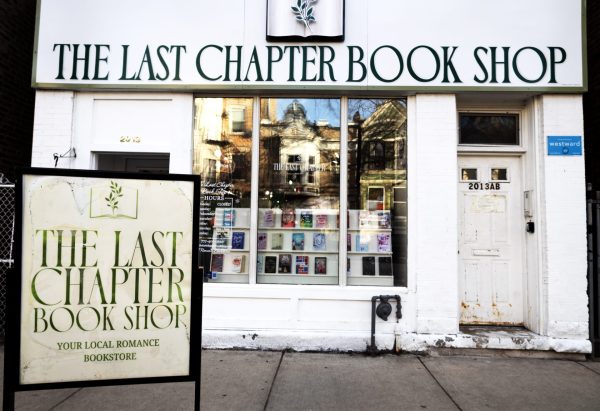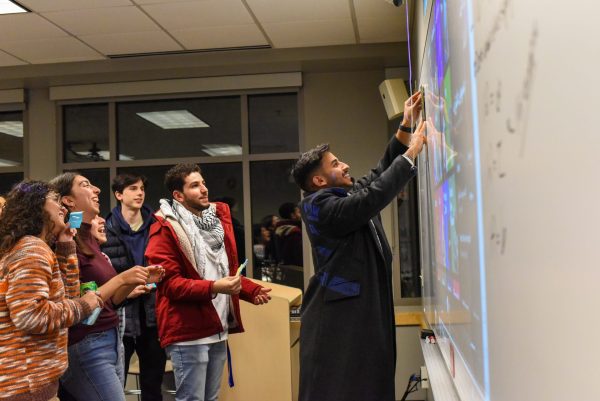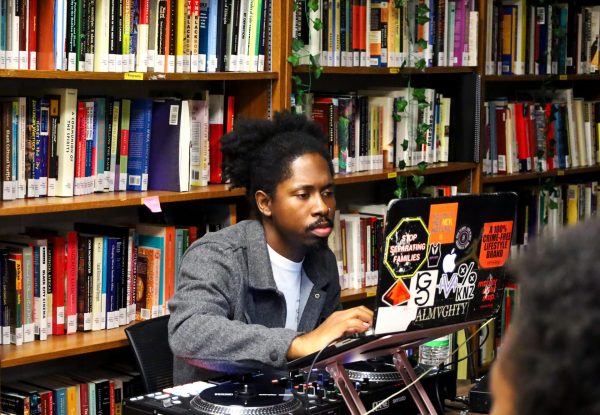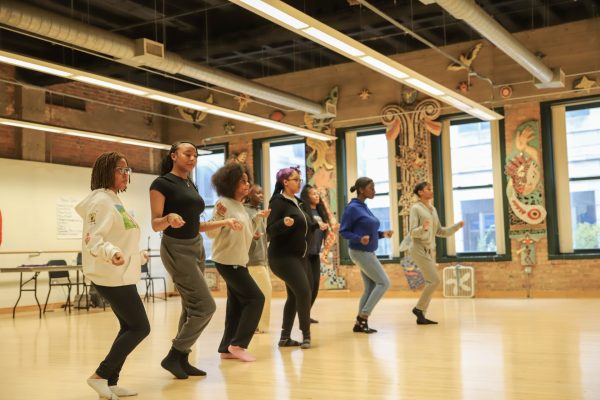Slow down your shopping: how college students fall victim to fast fashion, and how to stop it
It’s already well known that in the world of socially conscious shopping, fast fashion is a dirty word. But when endless trend cycles and overconsumption are so normalized, how do we get off this high-speed train to nowhere?
The fashion industry accounts for around 10 percent of global carbon emissions and uses more energy than the aviation and shipping industries combined, as reported by the BBC.
Starting with raw materials, growing the cotton needed to make one pair of jeans requires more than 2,500 gallons of water, the same article reported. Then there’s emissions from transporting products from overseas factories to stores or home addresses. Even while they’re being used, washing clothes made with polyester releases microplastic into our water. And when we’re done wearing them, items are likely to head to a landfill.
The BBC reported in another article that almost 60 percent of young people feel highly worried about climate change. But even with these values, the social aspect of fashion combined with tight budgets makes college students very susceptible to fast fashion.
“Fast” fashion specifically is an industry where clothing is made in cheap, trendy styles meant for consumers to cycle through quickly, discard and then come back for more. Marked by overconsumption, the cycle is only getting faster.
“There used to be only four seasons: winter, spring, summer, fall,” said Emily Trujillo, who had been the president of the DePaul Fair Trade Committee before graduating last quarter. “Now there’s 52 weeks of fashion. Companies are trying to get as much out of their workers as possible.”
Fast fashion has not only an environmental impact, but a human impact. Part of Fair Trade’s mission is to counteract the poor working conditions and underpaid labor that is all too common in manufacturing clothes for large fashion brands. Fair Trade promotes more ethical alternatives, where products have to pass rigorous social and environmental standards to be certified as Fair Trade.
DePaul’s Fair Trade chapter held their “Fashion Revolution” event last month featuring an ethical clothing fashion show, clothing swap and guest speaker. The annual event is in remembrance of the Rama Plaza factory tragedy, when a garment factory in Bangladesh collapsed. Over 1,000 people were killed making clothes for fast fashion brands, including Primark, which has a three-story store just blocks from DePaul’s Loop campus.
“I think us as consumers have this concept of out of sight out of mind,” Trujillo said. “We only check the label to see the name [of the] brand, not to check where it was made.”
Barbara Willard is an associate professor at DePaul who specializes in environmental communication and works in promoting pro-nvironmental behavior among consumers.
“The tricky thing is that there’s something called the attitude behavior gap,” Willard said, where people’s actions don’t match up to their reported values. “So it’s a challenge to try and really get people to change their behavior.”
But trying to shop sustainably isn’t always easy: most Fair Trade and sustainable brands are priced out of the college student budget, and few are size-inclusive. And to young people’s credit, fast fashion has been largely all Gen Z has ever known, with the production model beginning in the ‘90s and exploding in the years since then, as one Vox article explained.
“It’s not like you can just tell people [the negative impacts of fast fashion] and they’ll stop behaving in that way,” Willard said. “They have to have a convenient alternative.”
Online second-hand shopping has added convenience to thrifting with apps like DePop and ThreadUp. But often, searching for an item second-hand just isn’t as simple as buying clothes in department stores or with Amazon Prime.
“Our culture needs to have a serious, critical look at our desire for convenience and what it costs us socially and environmentally,” Willard said.
Willard noted that social norms have a big impact on people’s shopping habits as well. Working to stigmatize fast fashion shopping while promoting activities like thrifting and upcycling as trendy, as many thrifters have done through social media, can help the shift to slower fashion appear easier and more appealing.
But also taking over the trends are “hauls” on TikTok from brands like SHEIN, where buying dozens of cheap pieces online is both normalized and glamourized.
Hannah Lau, president of the DePaul Fashion Society, described how social media has exacerbated how normalized overconsumption is when it comes to clothes.
“I think the issue is also people photographing what they wear, so they’re really afraid to outfit-repeat,” she said.
And when influencers market things they wear or a certain item goes viral, often with a posted Amazon link, it promotes buying items too specific to find at a thrift store. Shoppers have to buy new if they want to get the exact item or style that’s trending at a given moment.
“I think it’s difficult because marketing for certain products has been really good,” Lau said. “Something’s gonna hit your brain and create that dopamine.”
But as someone passionate about fashion, Lau finds ways to balance her love for clothes with a goal of mindful consumption.
She suggested trying out a capsule wardrobe, where a person limits themself to repeatedly wearing a few versatile items. She also tried out a “no-buy” for three months, restricting any new clothing purchases entirely.
But if those methods are too harsh, Lau suggested shopping with a friend to keep each other accountable and simply being more mindful about what to buy.
“My dad has instilled this in me that whenever you buy something, always think of 3-7-21,” Lau said. “If you look at an item and it’s a plain white shirt and it fits you really well, you’re gonna wear that 21 times. But let’s say it’s neon: how many times am I gonna wear that? It could be seven, it could be three. But it’s really internalizing what you have and how you’re gonna wear it.”
Lau adds that microtrends are much different and more harmful than regular trends, making niche styles short-lived to the excess. But she also thinks that there’s not much need to follow trends in the first place.
“Then you just look like the rest of the other people I see on Instagram, and it gets kind of boring,” she said.
Trujillo likes to find styles sustainably by doing clothing swaps with her friends and family. Overall, she agrees that slowing down fashion doesn’t have to take a major lifestyle change. Even if you still shop from fast fashion brands, just shopping purposefully and wearing items for longer will be a step in the right direction.
“I’m not saying never buy fast fashion,” Trujillo said. “That’s okay, we’re not all perfect…We just ask that you subconsciously think and care about, ‘where did my thing actually come from?”

















